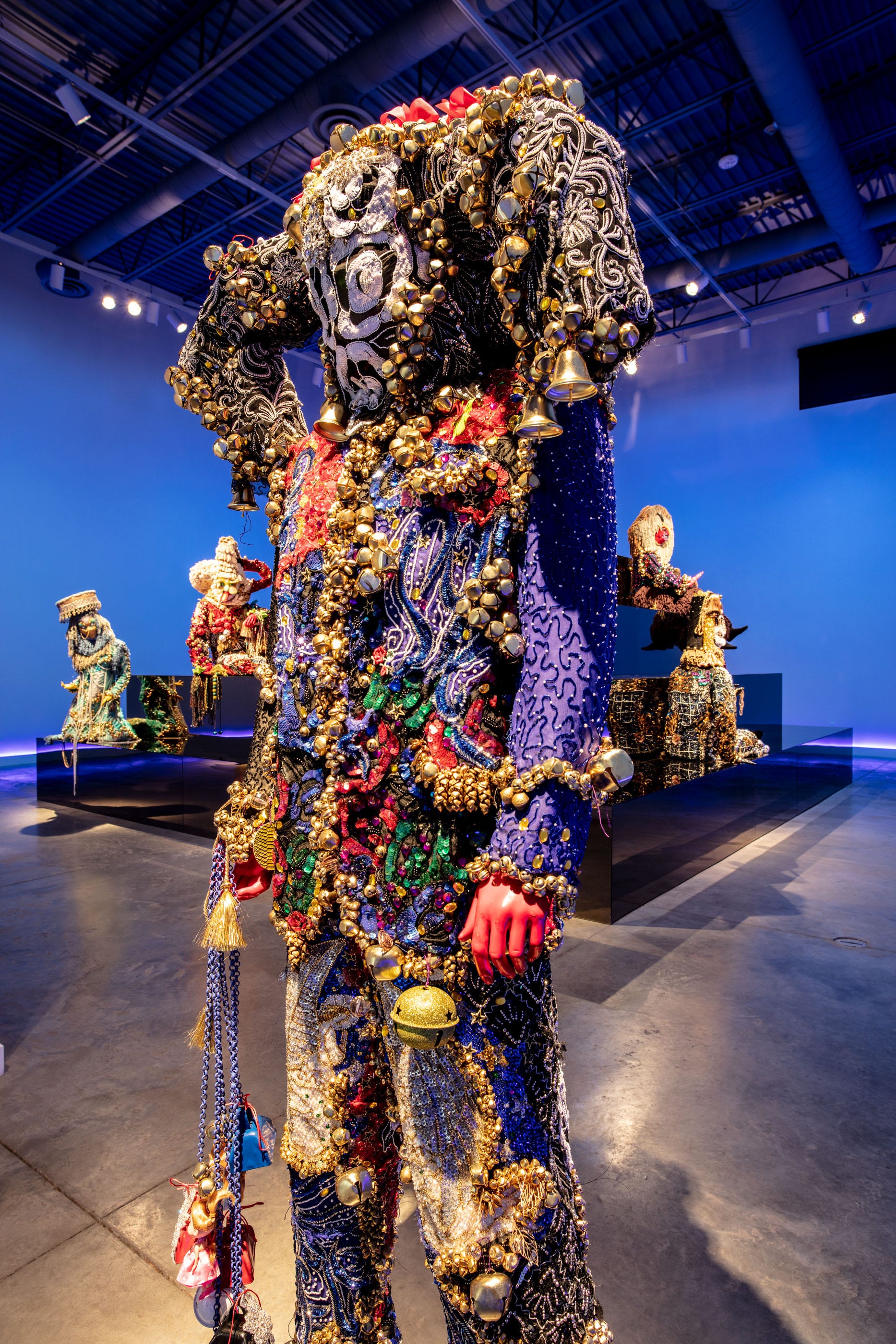Raúl de Nieves: Fina and the Lives of Objects
- Blog Post
- Exhibitions


Through processes of accumulation and a celebration of excess, Raúl de Nieves (born 1983, Michoacán, Mexico) transforms humble materials into spectacular objects. He integrates these objects into the space around them to create immersive narrative environments.
De Nieves, who lives in New York, traces his artistic practice back to his childhood in Mexico: at school and alongside family members, he learned traditional Latin American sewing and beadwork that now permeate his art. He has vivid memories from that time relating to what he describes as “a lifestyle of making,” in which artisanal production was a part of everyday routines.

For Fina, his first solo museum exhibition, de Nieves presents a new site-specific installation: an array of vibrantly colored and densely textured figurative sculptures populate a mirrored structure in Transformer Station’s main gallery.

They seem to ascend toward Day(Ves) of Wonder (2007–14), perched at the top. Emblematic of de Nieves’s artistic process, this work is made from thousands of beads built up over a period of seven years. “Like stalactites or ivy, the forms of my sculptures indicate the passage of time,” the artist explains.

Time is also a central component in de Nieves’s work through performance: he made the works on view with the intention that they could be animated through live action — indeed, some already have. For example, Ceremonial Alien of Metal Exits, which stands as the stationary greeter for Fina, has previously been featured in numerous performances and worn by the artist himself.


Just as de Nieves’s works of art have lives outside of their presentation at Transformer Station, so too do many of the objects that are part of the Cleveland Museum of Art’s encyclopedic collections. Coinciding with the run of Fina, the museum invites visitors to explore our permanent collection galleries through a self-guided tour that features objects that had uses — ranging from practical functions to ritual roles — before they entered the museum.
The tour is written by Stephanie Foster, the CMA’s interpretive planner in the department of public and academic engagement. Here are some tour highlights, which are available at the visitor information desk in the atrium and can be downloaded here.

Large horns curl upward, crowning this African mask and identifying it as a bush, or forest, buffalo. For the Bwa people of Western Sudan, bush spirits can take on animal form. Represented on masks, buffalo typically have concentric circles as eyes, a prominent snout, and red, white, and black decoration. In this gallery we see this mask as a static object, but it was meant to be worn and danced. In the Bwa culture, dancers wear masks like this one at special times throughout the year, such as funerals, initiations of girls and boys into adulthood, and annual rituals to protect the community.

This stained glass window depicting a lush summer’s day once decorated a luxurious home in Cleveland Heights, Ohio. Howell Hinds, a mining executive, purchased land and began construction of his home in 1898. Designed by Louis Comfort Tiffany, this window was probably installed around 1900. Stained glass windows were popular in American interior design at this time because they resembled paintings and could be illuminated by sunlight.

Seven fearsome lions snarl and salivate as they surround the central figure, the prophet Daniel, who has been thrown into their den. An angel at top right, sent to protect Daniel from sharp teeth and claws, peers over the lions. This capital, or sculpted block that tops a column, once greeted Christian pilgrims inside the church of Saint-Aignan-sur-Cher in central France. As pilgrimages increased during the 11th and 12th centuries, many new churches were built and filled with sculpture and paintings that illustrated important religious stories like this one.

The mihrab, or prayer niche, is the focal point of the wall (called the qibla wall) inside a mosque that is oriented toward Mecca. Dense, contrasting patterns of organic forms and geometric shapes cover the surface of the mihrab, while the border includes an inscription from the Koran in scrolling calligraphy. The brilliant color scheme including white, turquoise, cobalt, green, and dark yellow is typical of this type of ceramic mosaic decoration and resonates with the colors of paradise, where the faithful go after death.